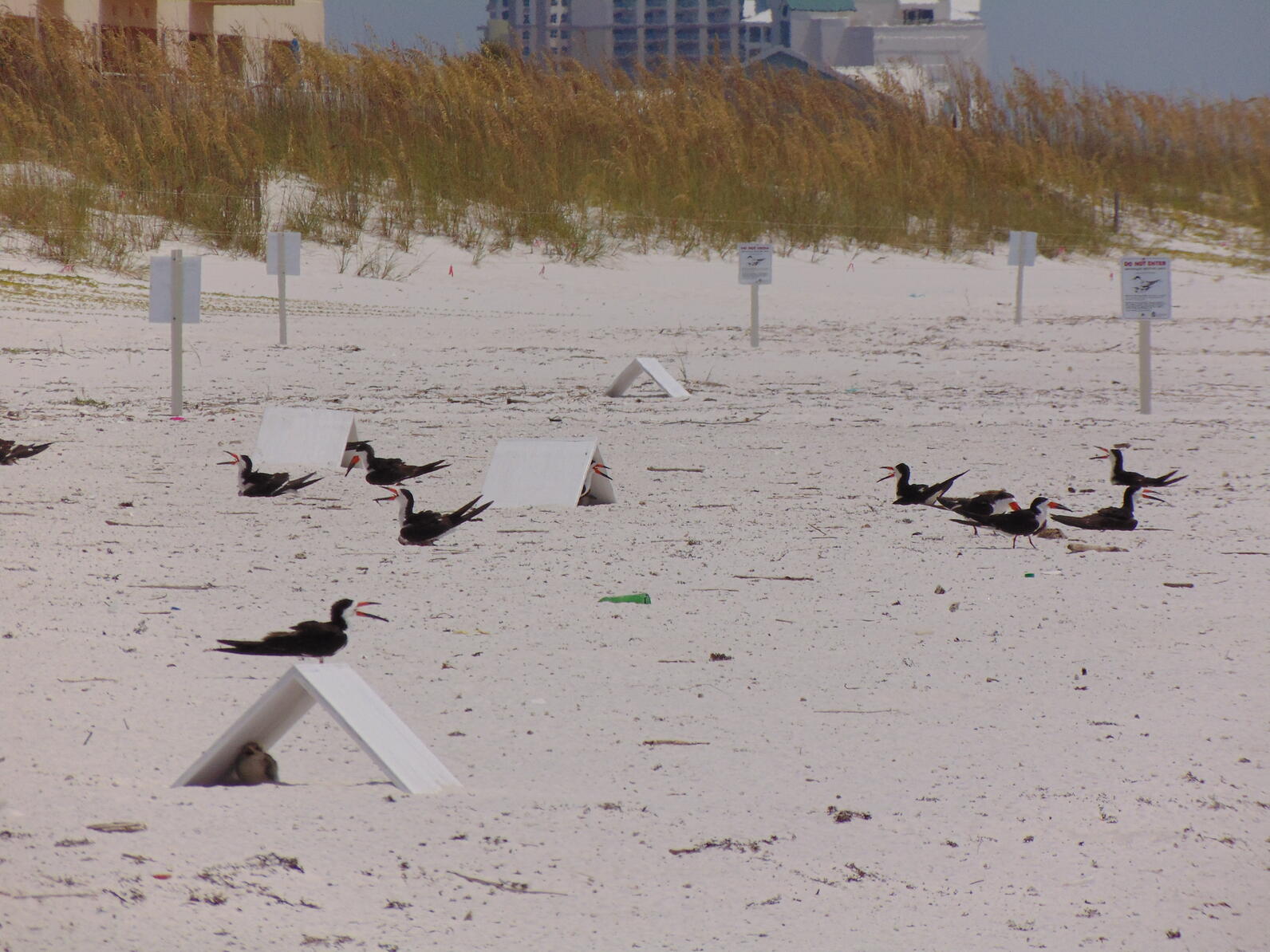Nesting sea and shorebirds raise their chicks in precarious environments. In addition to risks from human disturbance on our beaches, Florida heat itself proves dangerous to vulnerable young birds. On rooftops and beaches, temperatures can soar to 140 degrees, and until feathers grow in, chicks cannot thermoregulate. When their parents are not nearby or the chicks are too large to brood under their parents, these chicks are at risk of over-heating.
To give the birds some relief, Audubon Florida staff and volunteers employ chick shelters at nesting sites on the sand and on gravel rooftops.
What are chick shelters? These shelters come in a variety of shapes and sizes, depending on the species of shorebird and location where they are needed. The majority are made of wood and are usually in the shape of a lean-to or triangle. Some “shelters” can be largediameter PVC pipes in which smaller chicks, such as Least Terns, can easily fit; others are made from older signs, recycled to create a lightweight and easy-to-move shelter for chicks that like to roam.

Chick shelters were used about 20 years ago on rooftops in Pinellas County by St. Pete Audubon and Clearwater Audubon under the direction of Dr. Beth Forys of Eckerd College. They successfully provided shade at active rooftop nesting sites and we now see chicks of all sizes — from downy to fledged — using these shelters on rooftops and at area beaches. Adults have even used them when they needed a bit of shade!
These shelters also protect chicks from predators. Due to the increased presence of humans and their trash, we are noticing rates of predation on busy beaches increasing each breeding season. Many rooftop nesting sites are found in urban areas where avian predators are common. Predators such as Fish Crows and Cooper’s Hawks steal young chicks from the safety of their colonies on the beach or rooftop. With little to no vegetation at these sites, chicks have few places to run for cover when danger is present — chick shelters play an important role by providing security and protection from predators.
Audubon Florida’s coastal team continues to look for creative, adaptive solutions to protect these iconic sea and shorebirds during the summer breeding season. Are you interested in volunteering for our stewardship program? Email flconservation@audubon.org for more information.





